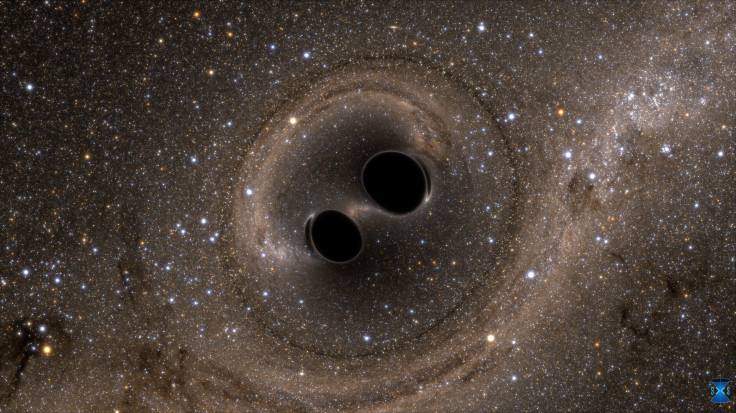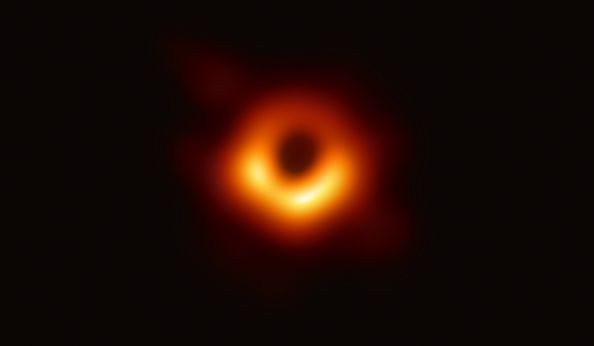LIGO, Virgo Detect Second Gravitational Wave Brought By Black Hole Eating Star

For the second time, scientists working on the LIGO have caught the gravitational waves of the collision of two neutron stars forming a black hole.
The Laser-Interferometer Gravitational-wave Observatory (LIGO) in the U.S. and the Virgo Observatory in Italy caught an unusual burst of waves on April 26. The discovery is being analyzed and run into computer simulation for interpretation.
The two observatories reported that at around 4 a.m. EST on Thursday, April 25, gravitational waves that traveled from 500 million light-years away have been detected.
For more on our @LIGO @ego_virgo #O3 public alerts see https://t.co/5fOBlUfipq. Watch this space for lots more posts on how to access them, what the alerts mean and how to make sense of plots like this one, showing our best guess for the 3-D location of #S190425z #O3ishere 3/3 pic.twitter.com/wje7rLHra5
— LIGO (@LIGO) April 26, 2019
"I think that the classification is leaning towards neutron star-black hole merger," Chad Hanna, a senior member of LIGO’s data-analysis team and a physicist at Pennsylvania State University in University Park, said.
Even though that the detected waves are not very strong, and could only be a fluke, “I think people should get excited about it, but they should also be aware that the significance is much lower” as compared to the previous record, Hanna said.
Prime candidate for the #S190425z counterpart is a #kilonova visible for a few days in optical/IR light. But (unlike #GW170817) astronomers have 25% of the sky to search this time, so it helps to have many eyes on the sky, and it's why our #O3 public alerts are so important 2/3 pic.twitter.com/oDjKzXiBkt
— LIGO (@LIGO) April 26, 2019
LIGO and Virgo previously recorded gravitational waves from a cosmic cataclysmic event in space. Gravitational waves are ripples in space-time caused by the union of two black holes or two neutron stars.
After detecting the event, a notice was released to alert scientists across the globe to turn their telescopes to observe the light brought by gravitational waves. The light can be observed in the so-called Kilonovae.
Kilonovae are 1,000 times brighter than average novae. The kilonovae are believed to create huge amounts of heavy elements, like gold and platinum. Due to its brightness, astronomers could easily find the event in a night sky.
“The latest event, provisionally labeled #S190426c, appears to have occurred around 375 megaparsecs (1.2 billion light-years) away, the LIGO–Virgo team calculated,” Davide Castelvecchi, a reporter at the journal Nature, said.
Even more exciting (maybe!) is *another* new candidate #S190426 which *could* be another #NeutronStars merger, or possibly a #NeutronStar #BlackHole merger that we have never seen before! Check out this thread from @LIGO scientist @cplberry that tells the story so far #O3ishere https://t.co/1wzxq6qj9U
— LIGO (@LIGO) April 26, 2019
“The researchers have drawn a ‘sky map’, showing where the gravitational waves are most likely to have originated and sent this information out as a public alert so that astronomers around the world could begin searching the sky for light from the event,” Castelvecchi added.
“If the weather cooperates, I think in less than 24 hours we should have coverage in almost the entire sky map,” Mansi Kasliwal, an astrophysicist at the California Institute of Technology in Pasadena, said.
Kasliwal leads the project called Global Relay of Observatories Watching Transients Happen (GROWTH). Her team controls robotic telescopes around the world. In this case, her team immediately booted up one in India, where it was night time when the gravitational waves arrived.
Thanks to those who worked late into the night, here's an updated estimate of the source location for #S190426c Northern hemisphere now looking more probable. LALINference1.fits.gz available from https://t.co/Oy47u7DbHC pic.twitter.com/e08vkIT8JR
— Christopher Berry (@cplberry) April 27, 2019
By comparing gravitational waves to other forms of radiation much more information about the event could be known.
Through the collaboration of the twin detectors, LIGO and Virgo, scientists expect to see one set of gravitational waves one per week.

© Copyright IBTimes 2024. All rights reserved.




















